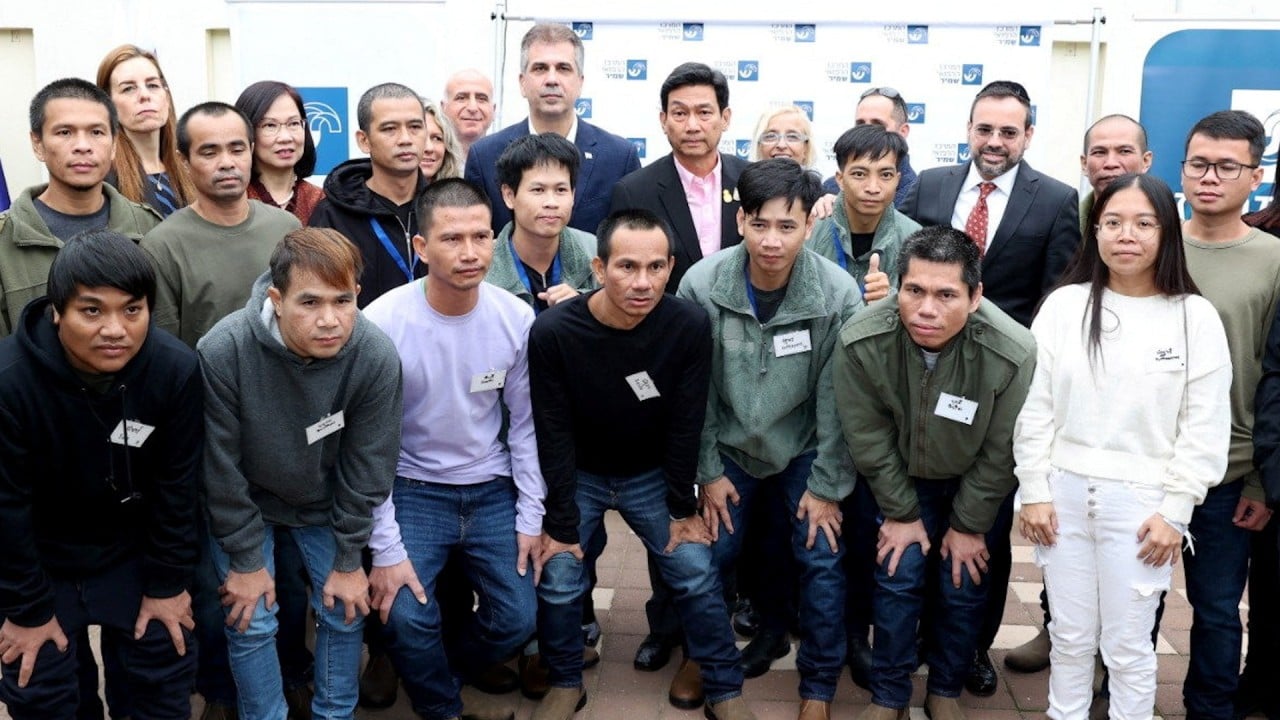Heavy fighting in Gaza halts most aid delivery and leaves civilians with few places to seek safety
Much of the north, including large parts of Gaza City, has been completely destroyed, and Palestinians worry the rest of Gaza could suffer a similar fate as Israel tries to dismantle Hamas, which has deep roots in the territory it has ruled for 16 years.
Israel has vowed to fight on, saying it can no longer accept a Hamas military presence in Gaza after the October 7 attack that triggered the war. Hamas and other militants killed about 1,200 people, mostly civilians, and took captive some 240 men, women and children in that attack.
An estimated 138 hostages remain in Gaza after more than 100 were freed during a ceasefire last week. Their plight, and accounts of widespread rape and other atrocities committed during the rampage have deepened Israel’s outrage and further galvanised support for the war.
Pushed to the edge
The war has been an unprecedented catastrophe for Palestinians civilians, eclipsing all four previous wars between Israel and Hamas, and their suffering is set to worsen as the offensive grinds on.
For the past three days, aid distribution – mainly just supplies of flour and water – has been possible only in and around Rafah, on the border with Egypt, because of fighting and road closures by Israeli forces, the UN’s humanitarian aid office said.
Hamza Abu Mustafa, a teacher who lives near a school-turned-shelter in Rafah and is hosting three families himself, said “the situation is extremely dire.”
“You find displaced people in the streets, in schools, in mosques, in hospitals … everywhere.”
A Palestinian woman who identified herself as Umm Ahmed said the harsh conditions and limited access to toilets are especially difficult for women who are pregnant or menstruating. Some have taken to social media to request menstrual pads, which are increasingly hard to find.
“For women and girls, the suffering is double,” Umm Ahmed said. “It’s more humiliation.”
The humanitarian crisis gets even worse farther north.
Nawraz Abu Libdeh, who is sheltering in Khan Younis after being displaced six times, said the situation in UN-run shelters there is “beyond catastrophic,” with people fighting over food. “The hunger war has started,” he said. “This is the worst of all wars.”
In the central town of Deir al-Balah, the aid group Medecins Sans Frontieres said fuel and medical supplies have reached “critically low levels” at the Al-Aqsa Martyrs Hospital. Up to 200 wounded people have been brought in every day since Dec. 1, when a weeklong truce expired, it said.
“Without electricity, ventilators would cease to function, blood donations would have to stop, the sterilisation of surgical instruments would be impossible,” said Marie-Aure Perreaut Revial, the aid group’s emergency coordinator in Gaza. She said they are also running low on surgical supplies and equipment to stabilise broken bones.
Gaza has been without electricity since the first week of the war, and Israel has severely limited fuel imports, forcing several hospitals to shut down because they cannot operate emergency generators.
No end in sight
The war has killed more than 16,200 people in Gaza – most of them women and children – and wounded more than 42,000, the territory’s Health Ministry said late Tuesday. It has said many are also trapped under rubble.
The ministry does not differentiate between civilian and combatant deaths. Its overall tally tracks with a figure released this week by the Israeli military, which said about 5,000 of the dead were militants, without saying how it arrived at its count.
The military says 88 of its soldiers have been killed in the Gaza ground offensive.
It accuses Hamas of using civilians as human shields when the militants operate in residential areas. But Israel has not given detailed accounts of individual strikes, some of which have levelled entire city blocks.
Israel-Gaza war: Wang Yi calls for ‘major countries’ to be fair and impartial
The Israeli military said on Tuesday that its troops were “in the heart” of Khan Younis after what it described as “the most intense day” of fighting since the start of the ground operation five weeks ago, with heavy battles in the north as well.
Hamas’ continuing ability to fight in areas where Israel entered with overwhelming force weeks ago, signals that eradicating the group without causing further mass casualties and displacement – as Israel’s top ally, the US, has requested – could prove elusive.
Even after weeks of bombardment, Hamas’ top leader in Gaza, Yehya Sinwar – whose location is unknown – was able to conduct complex ceasefire negotiations and orchestrate the release of scores of hostages last week. Palestinian militants have also kept up their rocket fire into Israel.
